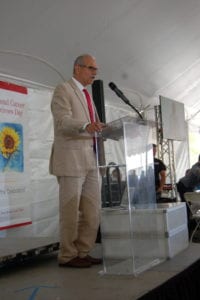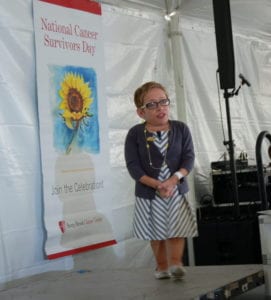It was a special game the Patriots, or anyone who follows the program, won’t soon forget.

In a come-from-behind rally, the Ward Melville boys lacrosse team scored six straight goals — five during regulation and one in sudden death overtime — to claim the program’s first Class A state championship title since 2013 with a 10-9 win over Pittsford. In the final minute of regulation, senior Eddie Munoz scored three straight, and Matt Grillo tied it, then scored the game-winner on a solo dodge from behind the cage with one second left in overtime, during the June 10 game at St. John Fisher College.
It was the ninth state title for Ward Melville (20-2), which finished the 2017 season on a 15-game win streak, and the first for head coach Jay Negus, who took over the program when Mike Hoppey retired following the 2013 title. Hall of Fame coach Joe Cuozzo won the first seven.
“We’ve joked around all year long saying we’re the ‘comeback kids’ because we had a great second-half performance in each game we played, but that was a little too close for me,” Negus said, laughing. “We do what we have to do. Eddie [Munoz] is our emotional senior leader and he took over the game, he took over the locker room. He has the ability to rally and lead people to a place you can’t get to yourself. He got us to where we needed to be.”
For Grillo, who was also celebrating his birthday, those last minutes made for a dramatic day with extreme swings of emotion.
“This is the best birthday present I could ask for,” he said. “It went from the worst birthday of my life to the best birthday of my life within 53 seconds.”

Ward Melville was trailing 9-4 with 3:43 left to play when Grillo received a pass from senior Liam Davenport to close the gap. Junior faceoff specialist Michael Giaquinto, who won 19 of 22 faceoffs, won the ensuing battle at the ‘X,” and every one thereafter down the stretch.
“At that point, there was no margin for error,” Giaquinto said. “I knew I had to win them all.”
With 1:01 remaining, after already having a shot saved at the 1:29 mark and following a Patriots timeout call, Munoz began his hat trick streak over a 34.4 second span.
“My teammates made great plays, and I felt, being a captain, that I owed my teammates a service,” Munoz said. “I told them I wasn’t going to let them lose.”
He scored his first goal on a sidearm shot, tallied a man-up goal on a feed from Grillo after a Pittsford slash call with 34 seconds left, and after a Giaquinto faceoff win and pass down the alley, scored his third 7.4 seconds later, to pull the Patriots within one, 9-8.
“The goals were all reacting to the situation,” Munoz said. “It was the heat of the moment and I saw my chances and took them. It feels amazing to pull through for my team, but I give all the credit to my teammates for supporting me all year and for setting up those plays.”
He agreed with his head coach, who said his Patriots never counted themselves out, having preached all season about never giving up, and knowing Ward Melville has always been more of a second-half team.

“It was honestly scary, I was a little nervous at first, but we stayed poised, kept our composure and played hard until the final whistle,” Munoz said, “And now we’re champions, so it paid off.”
Giaquinto kept the ball rolling with another faceoff win, and after one errant shot, Grillo got open and converted a pass from senior Andrew Lockhart to tie the game with just eight seconds left.
Lockhart said they were running his play — called “22 Pop” for his jersey number and eventual position shift.
“I popped, they collapsed,” he said. “I dropped it off to Grillo, who of course finished it. It’s something we’ve done all season. But without Mike Giaquinto, we would have lost the game. Faceoffs never get credit, but that kid put the team on his back.”
Early in overtime, after a long Ward Melville possession, goalkeeper Gavin Catalano (11 saves) made a stop on Munoz and the Panthers (19-2) headed the other way. They had a clean look, but Ward Melville’s senior goalkeeper Perry Cassidy made his best and most important save to give Ward Melville the ball one more time. Munoz shot it wide, putting the ball in Grillo’s stick on the restart.
“In the moment, I wasn’t thinking,” Grillo said. “Coach called a play, and I didn’t think there was enough time for it. I saw that there was no slide, and I got to the cage and finished. It was the most amazing moment of my life. So many emotions were running through my mind at that moment. It’s something that I will never forget.”









































